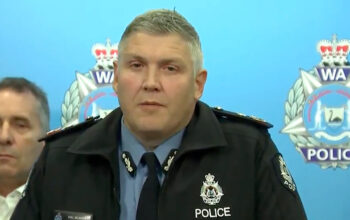
The war in Ukraine is a mismatch.
On one side is the Russian military, among the world’s largest and strongest forces. On the other side is Ukraine, a medium-sized country whose infrastructure is being destroyed during the fighting. Although Ukraine has powerful allies — like the U.S. and Western Europe — those allies have chosen not to send troops, partly because they do not see Ukraine as vital to their national interests and because they fear starting a larger war with nuclear-armed Russia.
The reality of this mismatch explains the developments of the past 48 hours. After some surprising setbacks in the first few days of the invasion, Russia has since used brutal tactics, often targeting civilians, to make progress.
Russian troops have taken control of areas in both the east and south of the country. In the east, Russia is hoping to isolate — and then crush — Ukrainian forces that for years have been battling Russia-backed separatists near the Russian border. In the south, the goal appears to be to control the Black Sea coast, potentially cutting off Ukraine from sea access.
Russia has also intensified its bombing of Ukraine’s two largest cities, Kyiv and Kharkiv, from planes and missile launchers stationed outside the cities. (Here’s footage of bombs hitting a residential area of Chernihiv, a city on the route to Kyiv from the north.)
The strategy, my colleague Eric Schmitt said, is “to terrorize the population and force them to flee, or beg their government to surrender — and to pummel Ukrainian government buildings to disrupt their wartime operations.”
The humanitarian disaster is likely to increase in the coming days. “We cannot collect all the bodies,” the deputy mayor of Mariupol, a southern city, told CNN. The mayor said that the electricity was out and that Russia was blocking food from entering the city.
More than a million Ukrainians, out of a population of about 40 million, have fled. Many have headed west, away from the areas where Russia is advancing, in the hope of entering bordering countries like Poland or Romania. A million more people are internally displaced.
Lviv, the largest city in western Ukraine, is filled with people carrying suitcases, according to Valerie Hopkins, a Times correspondent there. Hotels are cramming people into rooms so that they do not need to sleep at the train station. Valerie spoke with one 20-year-old woman traveling with her mother who had packed only three sweatshirts, a pair of socks and her dog. The two of them had left everything else behind.
Russia’s challenges
It still seems possible that Russia will not be able to win a quick victory.
Russia does not yet control the skies over Ukraine, and its military is struggling to make much progress in the north, near Kyiv. A miles-long convoy of hundreds of military vehicles has largely stalled, about 18 miles from Kyiv. It is facing fierce Ukrainian opposition, as well as shortages of fuel and spare parts, a reflection of the failure to conquer Kyiv immediately.
Morale among Russian troops may also be a problem. Pentagon officials told Eric that some Russian soldiers appeared not to have known that they would be invading Ukraine until the war began. Ukrainian officials quoted what they claimed was a Russian soldier’s text to his mother, recovered from his phone after he died: “There is a real war raging here. I’m afraid. We are bombing all of the cities together, even targeting civilians.”
The U.S., E.U. and Britain are continuing to send arms to Ukraine’s military, over land routes. And the West has continued to impose sanctions, which seem to be inflicting significant damage on Russia’s economy.
All of which raise the prospect that the war, which already seems to be somewhat unpopular within Russia, will become even more so.
‘No matter what’
Still, Vladimir Putin is signaling that he will respond to setbacks with more destruction. He also seems willing to allow Russia to pay a high price, in both economic terms and soldiers’ lives.
During a 90-minute call yesterday with French President Emmanuel Macron, Putin said that Russia would achieve its goal in Ukraine “no matter what.” In a televised address yesterday, Putin told Russians that he was determined to fight the war.
Paul Poast, a political scientist at the University of Chicago, pointed out on Derek Thompson’s “Plain English” podcast that Russian leaders have a long history of accepting large casualties among their own troops to win wars. “I’m starting to think that that is what they’re expecting is going to happen here,” Poast said. “It doesn’t matter about the morale, it doesn’t matter if the equipment breaks down. They’re just going to be able to overwhelm eventually the Ukrainians because they don’t expect direct military involvement by the West.”
There are other plausible outcomes, though. The Ukrainian resistance could prove so stout that Russia finds itself in a yearslong quagmire. Or Western sanctions could create such instability in Russia that Putin loses support among the officials around him.
Regardless, the coming weeks are likely to be filled with tragedy for Ukraine.
Batman returns, again
Every few years, it seems, there is a new Batman. This time it’s Robert Pattinson, taking on the role in “The Batman” alongside Zoë Kravitz’s Catwoman. Here’s a crash course in others who have worn the cape:
Adam West: Goofy and nostalgic, West’s take on the superhero hit the big screen in 1966, in a feature-length film based on the cult TV series.
Michael Keaton: Reinterpreted by the director Tim Burton in the late 1980s and early ’90s, Keaton’s version of Batman, set against a gothic backdrop, was haunted and more frightening.
Val Kilmer and George Clooney: The director Joel Schumacher’s pair of ’90s movies are perhaps best known for their camp and Batsuits with nipples.
Christian Bale: The director Christopher Nolan’s “Dark Knight” trilogy is a fan favorite, and it ushered in a wave of gritty superhero blockbusters. Whether Bale’s guttural Bat-voice was over the top or inspired is still up for debate.
Lego Batman: Voiced by Will Arnett in “The Lego Movie” franchise (with a stand-alone movie in 2017), this satirical Batman stands at a fearsome four centimeters tall, according to The Economist.
Ben Affleck: The actor took on the role beginning in 2016, with a more grizzled, world-weary spin on the masked vigilante.
And for the completists, Esquire has a guide to watching all the Batman flicks in order. — Sanam Yar, a Morning writer



